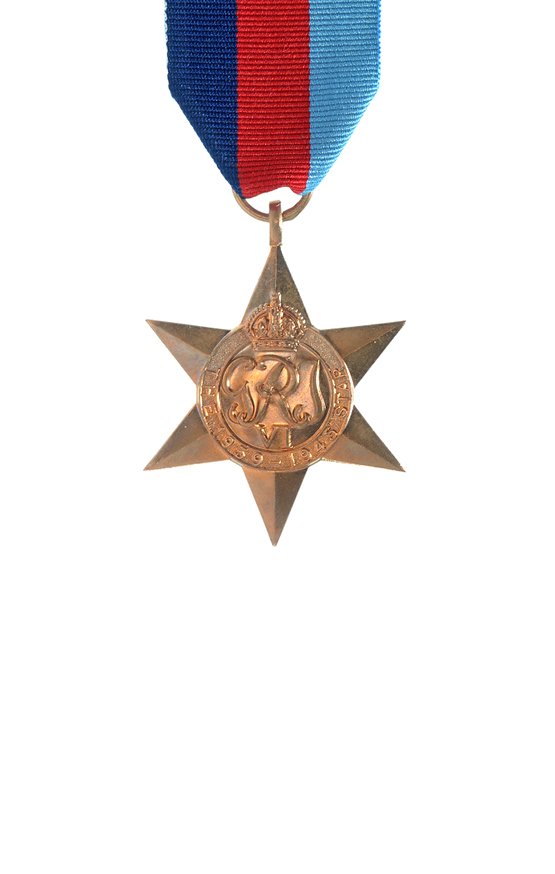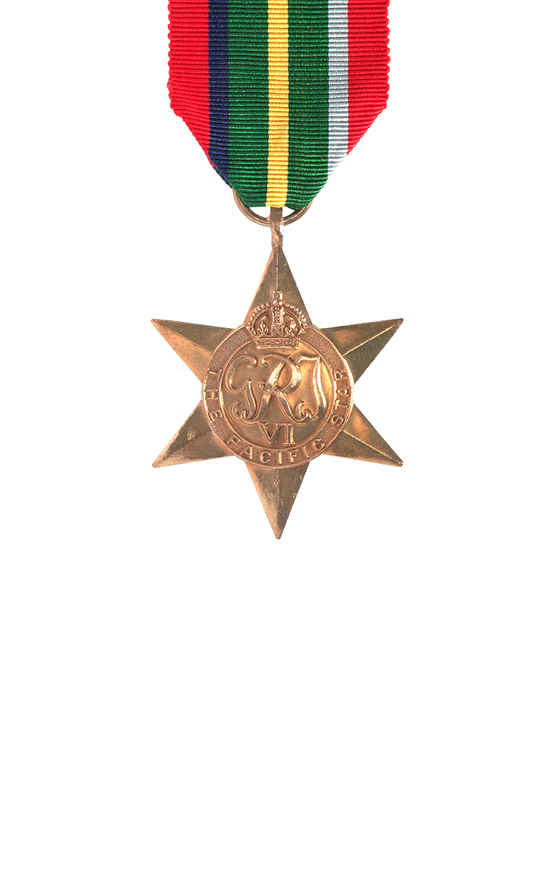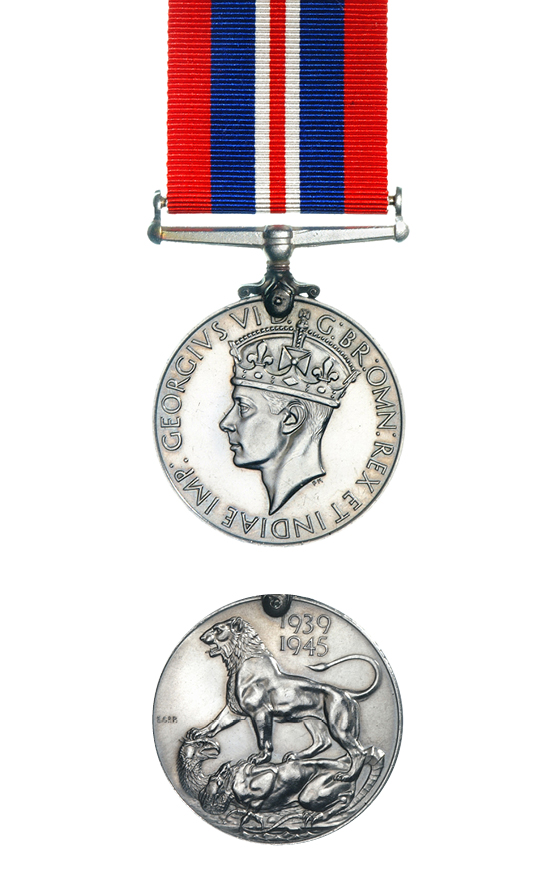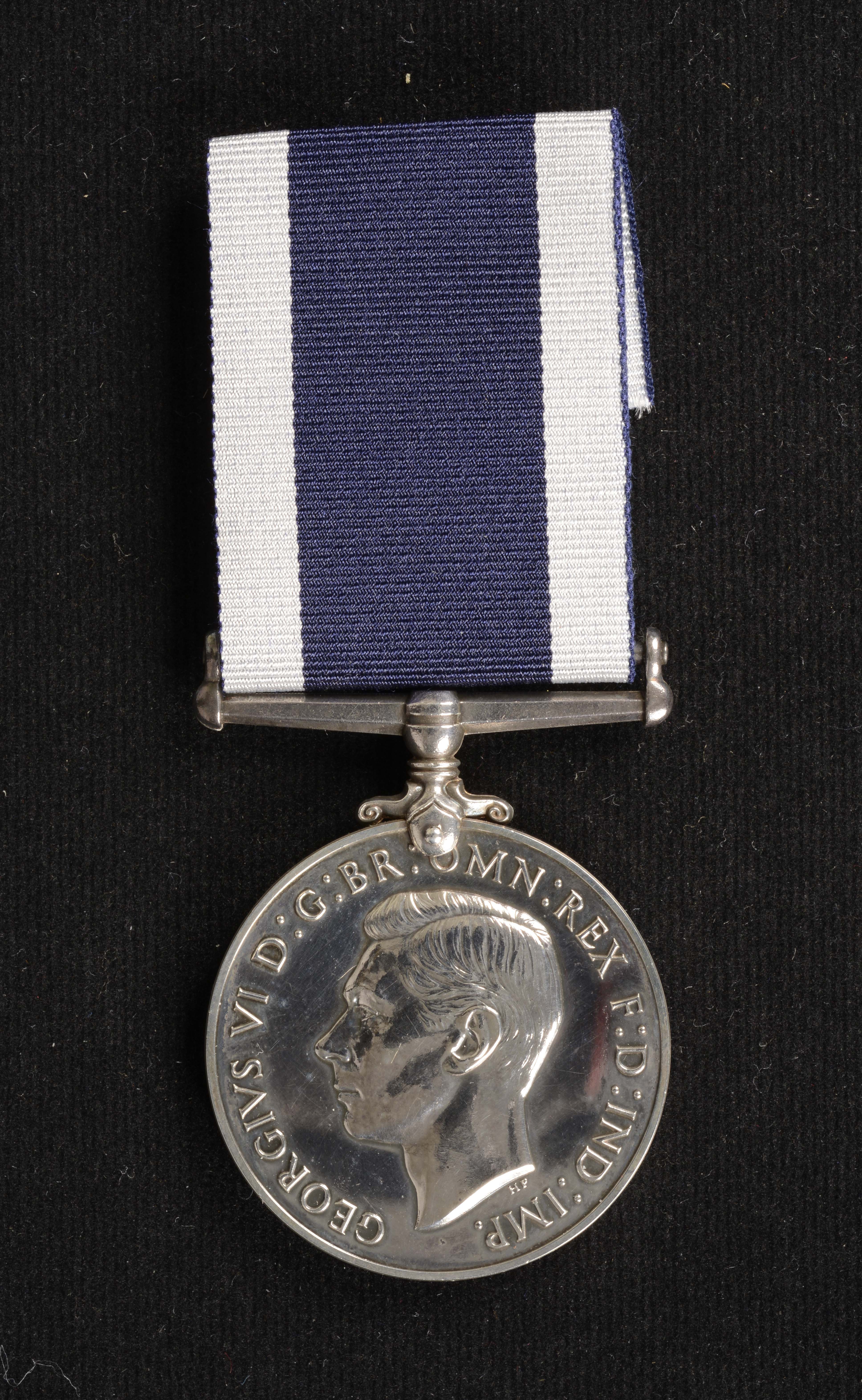

Display No. 14F
TRIMBLE, Samuel John
Samuel ‘Baggy’ Trimble joined the Royal Marines in October 1924. For the first 15 years of his service, Trimble was primarily based in the Portsmouth Division but was posted to several vessels during this time including HM Ships Tiger, Concord, Cornwall, and London.
At the outbreak of the Second World War, Trimble was part of the Royal Marine detachment posted to HMS Achilles. He was serving in Achilles when she was called to patrol the Pacific and Atlantic Coasts of South America for German vessels. He was subsequently involved in the Battle of the River Plate on 13 December 1939. During the battle, Trimble was in the Direct Control Tower and his job was to spot the fall of Achilles’ shells and reporting them to the Transmitting Station. When the Direct Control Tower was hit, Trimble ‘was severely wounded but stood fast without flinching or complaint throughout the hour of action that followed, bearing his wounds with great fortitude’. For his actions at River Plate he was awarded the Conspicuous Gallantry medal (CGM). He continued to serve in Achilles until 1943 and was on board when the ship was bombed off Guadalcanal. He was part of the crew that took Achilles to Britain for modernisation and refit. From September 1943, Trimble was posted to HMNZS Gambia which took part in operations in the Indian and Northern Pacific Oceans including actions against Japanese forces. He served in Gambia until June 1945 when he was posted ashore and then to HMS Golden Hind at Sydney. He retired from service in June 1946 and was discharged ashore in Victoria, Australia.
Awarded medal(s)
Medal Description [Left to Right]:
The Conspicuous Gallantry Medal

The Conspicuous Gallantry Medal (CGM) was instituted in 1855, as the Navy’s equivalent to the Distinguished Conduct Medal. It was awarded to senior and junior ratings. From 1942, its coverage was extended to Air Force personnel of equivalent ranks serving with the Navy. Different medal ribbons distinguish awards to Navy and Air Force recipients. The CGM was replaced in New Zealand in 1999, by the New Zealand Gallantry Star, which is awarded for outstanding gallantry in situations of danger.
The 1939-1945 Star

The 1939-45 Star is the first in a series of eight campaign stars instituted in 1945 to recognise service in World War Two. The ribbon has three equal vertical stripes of dark blue, red and light blue. The dark blue stripe symbolises the service of the Navy and the Merchant Navy, the red stripe symbolises the service of the Army, and the light blue stripe symbolises the service of the Air Force. The equal width bands represent the equal contributions of the three service arms towards victory. The ribbon was devised by King George VI. Two clasps could be awarded with this medal: ‘Battle of Britain’ and ‘Bomber Command’. Only aircrew would qualify for these clasps although a small number of Fleet Air Arm naval pilots flew for the air force and would be eligible for the ‘Battle of Britain’ clasp.
The Pacific Star

The Pacific Star was awarded in the Second World War for operational service in the Pacific between 8 December 1941 and 2 September 1945. This medal was also awarded for certain specified service in China, Hong Kong, Malaya and Sumatra: between 8 December 1941 and 25 December 1941 (for Hong Kong); between 8 December 1941 and 15 February 1942 (for China and Malaya); and between 8 December 1941 and 23 March 1942 (for Sumatra). The centre of the ribbon is dark green (symbolising the jungle) with a central yellow stripe (symbolising the beaches). On the outer edges are wide stripes of red (representing the Army), with narrow stripes of dark blue and light blue (representing the Navy and Air Force) between the stripes of dark green and red. A ‘Burma’ clasp could be awarded with this medal. Personnel qualifying for both the Pacific and Burma Stars were awarded the first star but only a clasp in respect of the second.
The War Medal 1939-1945

The War Medal 1939-45 was awarded across the British Commonwealth to all full-time members of the Armed Forces in the Second World War for 28 days service between 3 September 1939 and 2 September 1945, irrespective of where they were serving. The ribbon is the red, white, and blue of the (British) Union Flag. There is a narrow central red stripe with a narrow white stripe on either side. There are broad red stripes at either edge, the two intervening stripes being blue.
A bronze oak leaf on the medal ribbon denotes that the recipient was Mentioned in Despatches. To be Mentioned in Despatches a member of the armed forces had their name mentioned in an official report, written by a superior officer, and sent to a higher command. The report would describe the individual’s gallant or meritorious action in the face of the enemy.
Royal Naval Long Service and Good Conduct Medal

Awarded to ratings who have served a minimum of 15 years in the Royal Navy (previously 21 or 10 years), the first version of this medal was instituted in 1831 and it is still issued to Royal Navy personnel today. It features the reigning monarch’s head on the obverse and HMS Victory on the reverse with the recipient’s details engraved or impressed on the edge of the medal. This medal was also issued to eligible personnel serving in the New Zealand Division of the Royal Navy from 1921-1941 and then to Royal New Zealand Navy personnel from 1941-1981. In 1985 a New Zealand Royal Navy Long Service and Good Conduct Medal was introduced bearing the exact same design.

